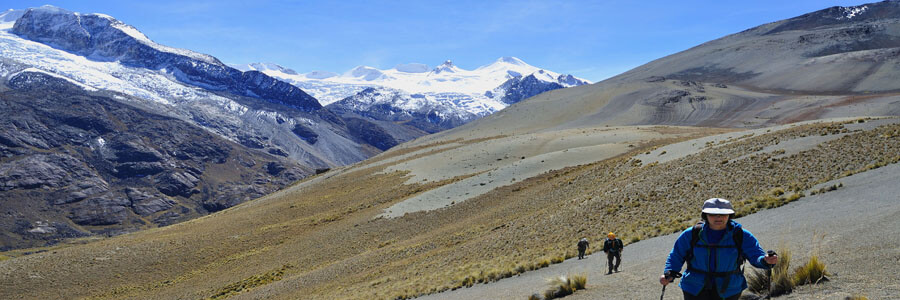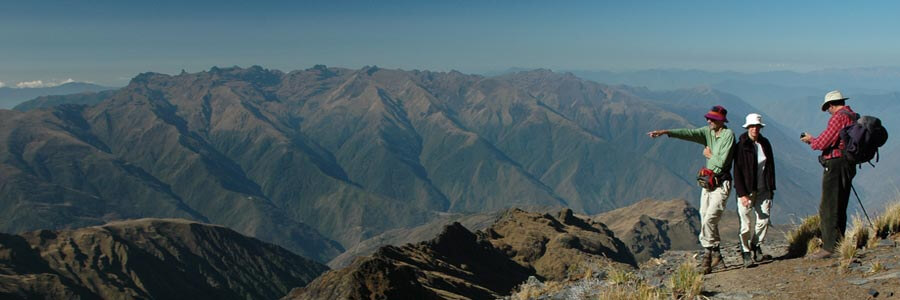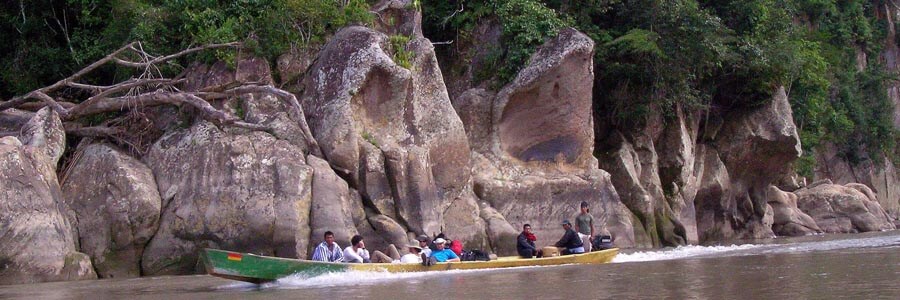According to researches, it is been said that humans first reached South America about 15.000 to 20.000 years ago (some archeologists go as far as 40.000 years ago). The theories say that people walked from the North, after crossing the Bering Strait, or sailed from the south pacific islands.
 The most prominent culture in these lands where the Aymaras, and among them the Tiwanaco, who developed around lake Titicaca between 1500 BC to 1200 AD. The reason why the culture abandoned its capital is still a mystery but scientists think that the native people suffered a long drought and run out of resources. They also say that around 70 thousand residents inhabited the capital, “Tiwanaco”, who had profound knowledge of mathematics, astronomy, hydrologic engineering, worked in family groups, highly specialized in their own activity and lived under a social system thought to have been almost equal for everybody. There is archeological evidence that the Tiwanaco empire once domain most of the central Andes, which boundaries expanded from Ecuador at the north down to the Atacama desert at the south, the Pacific coast at the west and the Amazon basin at the East.
The most prominent culture in these lands where the Aymaras, and among them the Tiwanaco, who developed around lake Titicaca between 1500 BC to 1200 AD. The reason why the culture abandoned its capital is still a mystery but scientists think that the native people suffered a long drought and run out of resources. They also say that around 70 thousand residents inhabited the capital, “Tiwanaco”, who had profound knowledge of mathematics, astronomy, hydrologic engineering, worked in family groups, highly specialized in their own activity and lived under a social system thought to have been almost equal for everybody. There is archeological evidence that the Tiwanaco empire once domain most of the central Andes, which boundaries expanded from Ecuador at the north down to the Atacama desert at the south, the Pacific coast at the west and the Amazon basin at the East.
After the fall of the Tiwanaco Culture in the 13th century, for about two centuries, many Aymara small kingdoms occupied the lands yet never united to form one empire. Instead, they operated under a commercial network until the Incas invaded them in the 15th century.
Approximately 60 years after, the Spaniards conquered Cuzco, the capital of the Inca Empire. After the fall of the Tiwanaco Culture in the 13th century, for about two centuries, many Aymara small kingdoms occupied the lands yet never united to form one empire. Instead, they operated under a commercial network until the Incas invaded them in the 15th century. The Incas re-conquered most of the old Tiwanacu empire traveling as south as the Atacama desert but didn't had time enough to explore and expand their empire but anyway they have been very often wrongly accredited for most of the trails and other constructions previously built by other cultures.
Besides the Tiwanaco culture, the shores of the Lake Titicaca and the mountainous areas have been source for many other Aymara cultural groups. The Apolobamba range for instance, have been source of cultures like the Mollo culture of Iscanwaya who built their city provided with running water collected by artificial aqueducts and left behind ancient terraces that cover entire mountain hillsides; Others are the Kallawayas; this traditional medicine men have traveled across the entire Andes region in search for medicinal Herb’s, and they are still active today.
Before the arrival of the Spaniards, there were about a hundred of different ethnic groups in the Andes.
The arrival of the Spaniards gave place to the appearance of White, Black and Mestizos (mix). Black communities came out when the black slaves brought from Africa were sent to grow Coca leafs in the Yungas (cloud forest), or succeeded escaping from their lords, and naturally looked for warm environments, The Afro-Andean, or Afro-Bolivian communities are mixed Black and aymara but try to keep their originally culture.
Today, South America is still one of the continents with more indigenous population concentration. Bolivia and Peru are the countries with more amerindian and mix population (up to 82% in the case of Bolivia, which has almost 60 native ethnic groups). Ecuador, Paraguay, Venezuela and Brasil also have a high concentration of amerindian and mix population. Argentina, Chile and Uruguay in the other hand, have very little indigenous population, so this countries are populated mainly by European descendents from the 20th century migration and some mix population.
Some countries like: Chile and Argentina give the general name of Mestizos to anyone who is not completely white, making almost all their native people to be called so.
Some of the Native Indians still living on these lands are found in the following list:
Mountains and Highlands
Live in the area of Puno in Peru, La Paz; Oruro and Part of Potosi in Bolivia, and the north of Chile. Speak Aymara, Spanish, and local dialects AYMARA, URU (URUQUELLAS, CHIPAYA, MURATO, HIRUITO, LLIPI)
Exceptionally QUECHUA speaking people live in Apolobamba mountain range KALLAWATAS
Valleys
Mainly QUECHUA who live in a great part of Peru, and Part of Oruro, Potosi, Chuquisaca and Cochabamba in Bolivia
Cloud forest and Amazon basin
The MOSETEN and LECOS, are found on the cloud forest and also in the Amazon.
Jungle tribes who still keep their traditions and familiar ties. ARAONA, AYOREO, BAURE, CANICHANA, CAYUBABA, CHACOBO, CHIMAN, CHIQUITANO, ESE EJJA, GUARAYO, ITONAMA, MCHINERI, MOVIMA, MOXEÑO, NAHUA , PAICONECA, PACAHUARA, SIROIONO, TACANA, TOROMONA, YAMINAHUA, YURACARE, AND YUQUI.
Gran Chaco plains
TAPIETE AND WEENAYEK, keep the Guarani as their language, and were thought to be nomads, living like that even in the middle of the last century, the truth is that they had to live escaping from hunters who still considered slavery an option for cheap working force.
Pacific coastline & Islands
Although most of the population in Chile is white or European-decendent, there are still small ethnic groups to be found in its territory. To the north decendents of the Aymaras populate the highlands and the lower slopes of the volcanic range.
Some Mapuche (also called Araucanos by the Spaniards) descendants live in Chiloe island and some regions in mainland.
Papa Nui indigenous still live in Easter island.
Today extint other ethnic groups inhabitated these lands: the Chonos who lived in small islands at the south and traveled between them using their canoes. The Tewelches (Aonikenk) also called "Patagones" by the spaniards; very tall nonadic and hunters who left paintings in several caves. The Yamanas and the Kaweskar (Alacalufes) were also nomadic marines.








